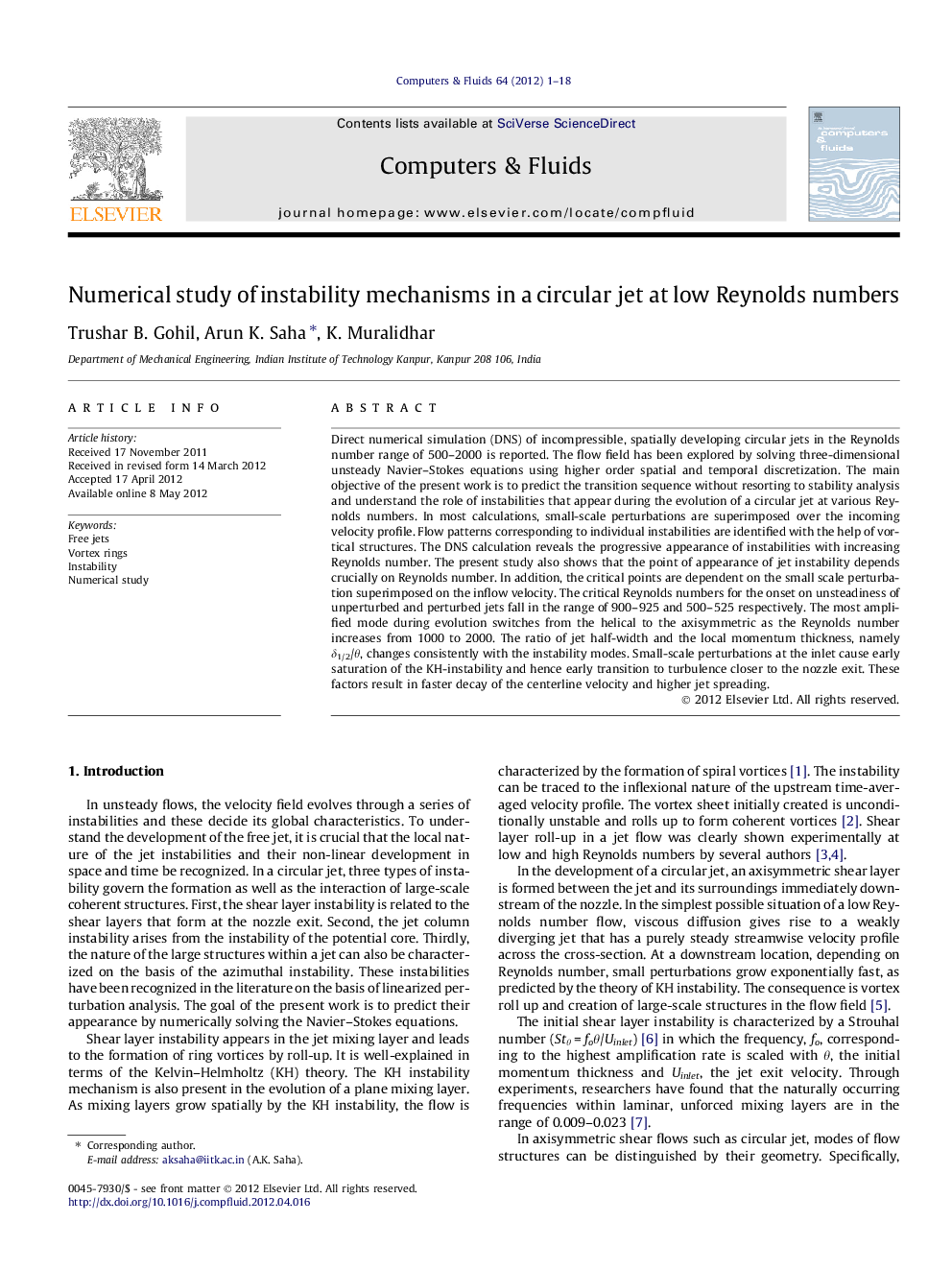| Article ID | Journal | Published Year | Pages | File Type |
|---|---|---|---|---|
| 756776 | Computers & Fluids | 2012 | 18 Pages |
Direct numerical simulation (DNS) of incompressible, spatially developing circular jets in the Reynolds number range of 500–2000 is reported. The flow field has been explored by solving three-dimensional unsteady Navier–Stokes equations using higher order spatial and temporal discretization. The main objective of the present work is to predict the transition sequence without resorting to stability analysis and understand the role of instabilities that appear during the evolution of a circular jet at various Reynolds numbers. In most calculations, small-scale perturbations are superimposed over the incoming velocity profile. Flow patterns corresponding to individual instabilities are identified with the help of vortical structures. The DNS calculation reveals the progressive appearance of instabilities with increasing Reynolds number. The present study also shows that the point of appearance of jet instability depends crucially on Reynolds number. In addition, the critical points are dependent on the small scale perturbation superimposed on the inflow velocity. The critical Reynolds numbers for the onset on unsteadiness of unperturbed and perturbed jets fall in the range of 900–925 and 500–525 respectively. The most amplified mode during evolution switches from the helical to the axisymmetric as the Reynolds number increases from 1000 to 2000. The ratio of jet half-width and the local momentum thickness, namely δ1/2/θ, changes consistently with the instability modes. Small-scale perturbations at the inlet cause early saturation of the KH-instability and hence early transition to turbulence closer to the nozzle exit. These factors result in faster decay of the centerline velocity and higher jet spreading.
► Instabilities in a free round jet with increasing Re are predicted using DNS. ► Temporal evolution of the flow field is itself used as an indicator of instability. ► From the temporal field, flow structure and instability mechanisms are identified. ► Small perturbations on the inflow plane have a significant effect on instability.
